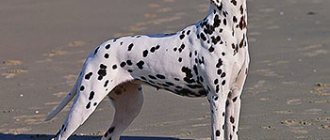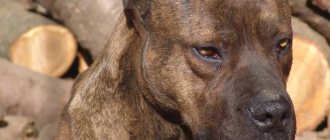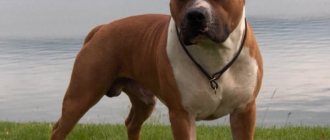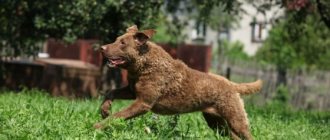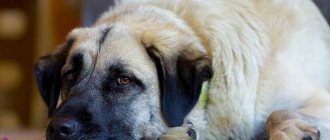Dalmatians are incredibly beautiful monochrome dogs. Their somewhat toy-like exterior and black and white coloring just begs to be painted by some artist. Not dogs, but living pictures for a children's coloring book! Are rainbow Dalmatians a beautiful coloring of the real Dalmatian breed or a coloring that exists only in our imagination? What colors are there in Dalmatian dogs? What is considered a breed standard and what is considered a breed defect? What spots are Dalmatian puppies born with? You will find answers to all these questions in our material.
Is there a breed of Rainbow Dalmatians?
What do you imagine when you hear the phrase “rainbow Dalmatians”? We won’t be mistaken if we say that you presented an incredibly beautiful, elegant dog with multi-colored spots on a white background. An incredibly beautiful sight! This is what dogs of this breed would look like if the “rainbow” color existed in nature.
Unfortunately, or fortunately, such dogs exist only in our imagination. On the one hand, it’s a little disappointing that it’s impossible to admire such beauty. On the other hand, it is very good that there are no such dogs in the Dalmatian breed. Any deviation from the generally accepted color is a breed defect that negatively affects the health of pets.
A similar breed defect, but one that actually exists, is the Longhaired Dalmatian. This is a breed mutation that may indicate the dog’s hybrid origin or the impurity of its gene pool. In some countries, such long-haired dogs are specially bred. In our country, breeding such specimens is not encouraged.
Longhaired Dalmatian
Character
It is believed that representatives of this breed tend to become attached to the owner and members of his family. The dog is sociable, active, and very clean . True, if you don’t pay attention to her, you might do something wrong or get offended.
If the owner does not work with the dog, he will find entertainment that is not always convenient for the owner. Such a pet may run far during a walk or play with illegal objects. However, in general, these animals do not cause much trouble, do not bark for no reason and get along well with children.
These dogs are curious, but not aggressive, and get along well with cats.
Description of the Dalmatian dog breed
Contrasting spotted color and aristocratic physique are the distinctive features of the Dalmatian breed. The dog’s bright exterior will attract the eyes of others to your pet, no matter where you appear with it. The popularity of the breed is incredibly high. The film adaptation of the fairy tale novel “101 Dalmatians” by British writer Dodie Smith played a major role in popularizing the breed.
The world first saw the story of 101 puppies in the cartoon genre in 1961. Mankind had the opportunity to meet their favorite characters for the second time in 1996, when Walt Disney Studios made a live-action film based on this work. We continued our acquaintance with charming black and white dogs in the animated series, which was filmed as a continuation of the film in 1997-1998.
The Dalmatian is a big dog. This fact, combined with his graceful physique, makes him even more impressive and noticeable. The height of a male Dalmatian at the withers can reach 62 cm. The height at the withers of a female Dalmatian is slightly different - 58-60 cm. The weight of an adult Dalmatian is 25-28 kg.
Theses
- This breed needs daily activity and exercise. Otherwise, they become destructive and uncontrollable.
- They shed! They shed a lot! The fur needs to be combed out, but it still covers the floors and furniture and is very noticeable.
- They need training to become a manageable and well behaved dog. They are stubborn, smart and headstrong. The owner must be consistent and dominant.
- The sooner socialization begins (meeting children, cats, other dogs and animals), the better.
- Families with small children need to be on guard, as dogs are active and fast and can knock the child down.
- Popular cartoons and films drove up the prices of puppies, and dogs began to be bred chaotically. By themselves, they are not very suitable for most families, and here there are also many dogs with an active psyche. Be careful when choosing a nursery.
What colors of Dalmatians are recognized by breed standards?
When we talk about Dalmatians, we think of dogs with contrasting monochrome black and white colors. Symmetrical black spots on a pure white background are one of the breed's coat colors recognized by international standards. This is exactly what the puppies from the legendary cartoon “101 Dalmatians” looked like; this is the kind of fur coat that the villainess Cruella De Vil wanted to sew for herself.
But this is not the only color allowed by breed standards. The second one is brown-spotted. In our country, this color is not very common, but abroad such dogs are owned more often than black and white ones. Western breeders specifically select white-brown pairs to produce puppies of this color. Dalmatians with brown spots are allowed for breeding and exhibition. It differs from the black and white variety in that the size of the spots on the Dalmatian with brown spots is smaller.
Brown Dalmatians look very noble and sophisticated. They have a less contrasting coat, a softer color of spots - this invariably attracts the attention of judges at exhibitions and passers-by on the streets. To get beautiful offspring with brown spots, the parents must have well-defined pigmentation. If this condition is neglected, offspring may be born with weakened pigmentation. This can lead to breed defects.
Requirements for spots on Dalmatians:
- The main color is pure white without interspersed colored hairs.
- The spots have a clearly defined shape.
- Symmetrical arrangement throughout the dog's body.
- The preferred spot size is 2-3 cm.
- The size of the spots on the limbs and head should be slightly smaller than on the rest of the body.
- Solid spots and areas of darkened fur are not allowed.
- There should be no white hairs on the surface of the spots.
- The tail should be spotted, the size of the spots on the tail is smaller than on the body.
- The spots on the ears should be especially noticeable, but they should not be a uniform dark color.
- The color of the spots on one dog should be the same. Tricolor in any combination (white-black-brown, white-brown-red, white-brown-lemon, white-brown-orange) is not allowed.
Important: a congenital continuous spot is a disqualifying defect.
History of the origin of the breed
The history of the origin of the Dalmatian is unknown for certain, and most often it is associated with the Balkan Peninsula and the province of Dalmatia. It is believed that it was there that the unusual spotted dog was bred as a result of crossing breeds such as the Great Dane and the Istrian Pointer.
This is interesting! An incredible love for horses, as well as strength and endurance, combined with the ability to run very quickly over considerable distances, made Dalmatians constant companions of many travelers, thanks to which the breed received the unusual name “coach dog”.
There is a version that Dalmatians could have been common in Ancient Egypt, since on the pyramids it was possible to find drawings depicting dogs that are very reminiscent of the modern breed. Some scientists also associate the origin with India. In any case, Dalmatians are indeed a very ancient breed, with a centuries-old history.
The unusual temperament and keen intelligence allowed the breed to be used as hunting and herding dogs . More than half a century ago, the Dalmatian was transferred to the category of a companion dog, and this breed became extremely popular and in demand already in the twentieth century.
Non-standard colors of Dalmatians - uniqueness or breed defect
Black and white and brown and white are all colors allowed for the Dalmatian breed. All other color options that unscrupulous breeders try to pass off as rare and unique are breed defects. Let's talk in more detail about what non-standard colors of Dalmatians can be found.
- Bronze. Bronze spots are a fault in the breed. It appears against the background of shedding, poor nutrition, and coat diseases. This is a temporary phenomenon in both black and white and brown individuals. Loss of pigmentation causes black spots to fade and take on a rusty or hazel color, while brown spots fade to rusty brown, orange, or lemon.
- Tricolor. This is a serious disqualifying fault. It is expressed by the constant presence of spots of two colors on the body of one dog. Black and white Dalmatians may have brown, brindle, yellow or tan markings. Brown tricolor Dalmatians have additional orange and tan markings. Spots of atypical color most often appear on the dog's chest, face and limbs. The complexity of this color lies in the fact that spots of the second shade do not appear immediately, but after 2-3 months. Therefore, you can purchase a puppy without a defect mark.
- Citric. A rare color defect looks like lemon or orange spots on a white background. The color of these Dalmatians can be compared to the color of Golden Retrievers. These dogs look very beautiful, but this color is a serious disqualifying fault. It is important not to confuse the sun-bleached spots of an adult Brown Dalmatian with natural lemon spots.
- Brindle. Another beautiful breed marriage. The spots in this case have a tiger tint.
- Asphalt. A rare color, considered a disqualifying fault. In this case, the black spots, due to a pigmentation disorder, acquire an asphalt tint.
- Peach. One of the types of pigmentation disorders in brown and white dogs. The spots on the animal's body are pale brown, peach or pale orange.
- Lightened. Dogs with this color defect are found among monochrome representatives. Due to a genetic mutation, their black spots appear gray-blue. These puppies look beautiful, so breeders often inflate their prices.
Important: Brown individuals never have black pigment.
How the color of a Dalmatian is formed - genetics
Genetics is responsible for the color of a dog’s coat, namely the presence of certain genes in the father and mother of the puppy. Let's consider how the color of the offspring depends on what genes the parents have. This will help us understand that the “rainbow Dalmatian” color is impossible in nature.
So, the inheritance of non-standard colors in the Dalmatian dog breed occurs through recessive (non-dominant) genes. That is, for a puppy to develop an exotic color (not recognized by breed standards), these genes must be present in both parents.
Let's look at which genes are responsible for the color of Dalmatians:
- As – a gene that is responsible for ensuring that a dog’s spots are uniform;
- Bb – in this gene, the capital letter B denotes the dominant black color, and the small letter b denotes the recessive brown color;
- Ee - in this genome, the large E denotes the black pigment, and the small e is responsible for the recessive yellow pigment;
- at is the genome that is responsible for the “tricolor”; in order for the tricolor color to appear in the offspring, both parents must have this gene;
- sw, T, F – genes responsible for the rich color of the spots and the speckled color of the hairs.
None of these combinations can create colored "rainbow" spots on a Dalmatian's white body. This is a fact, nothing can be done about it.
Rainbow Dalmatians

